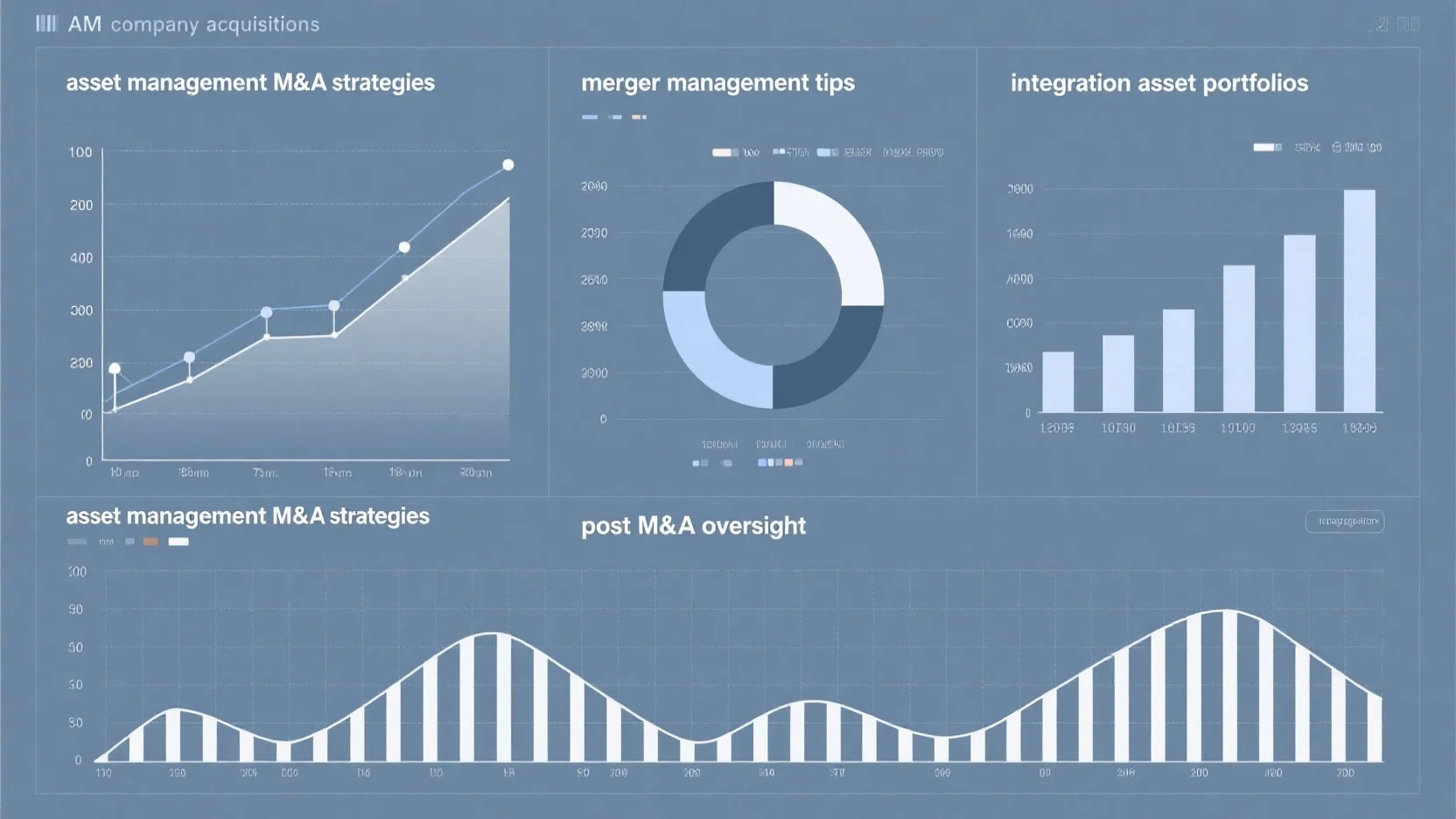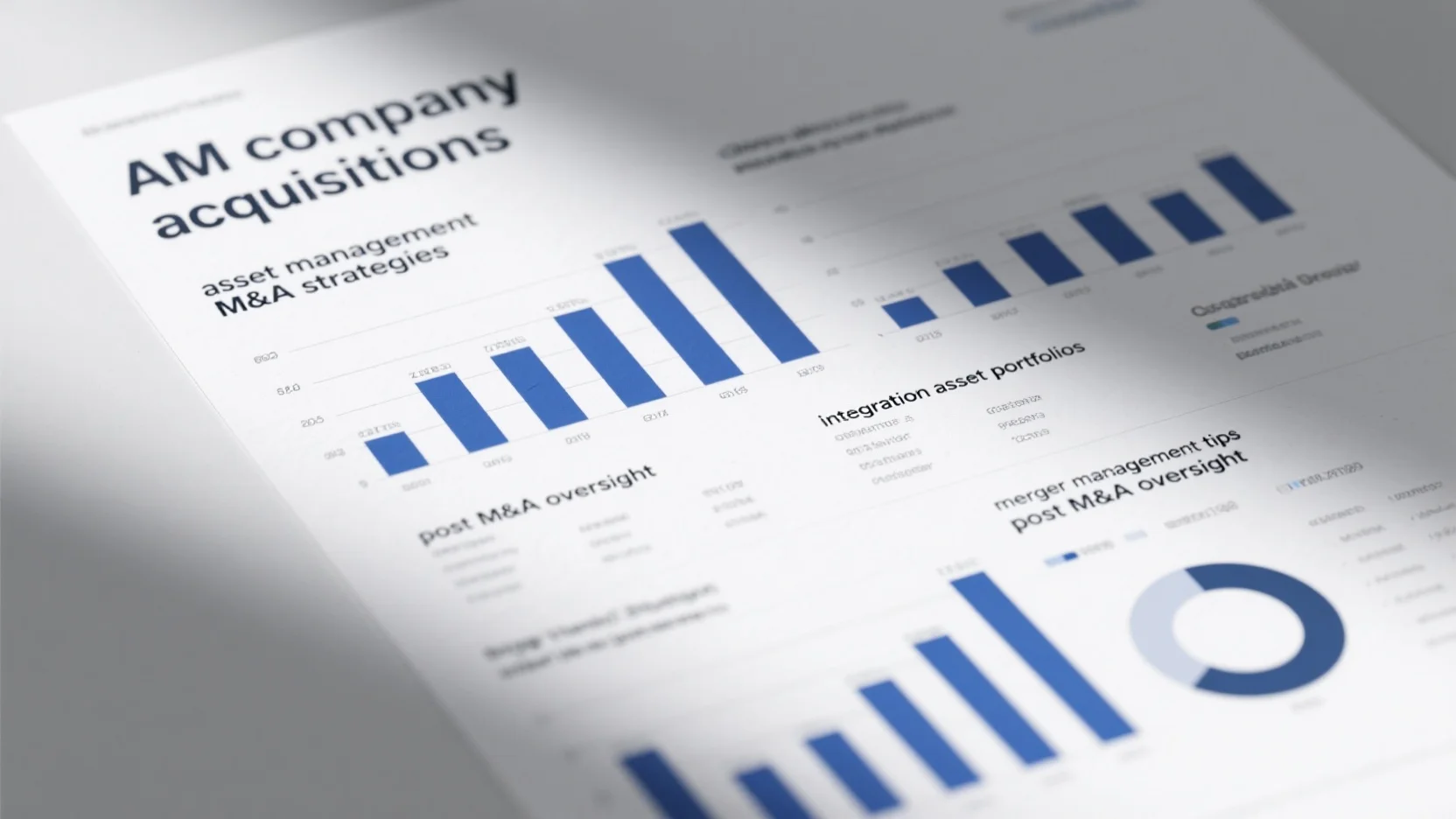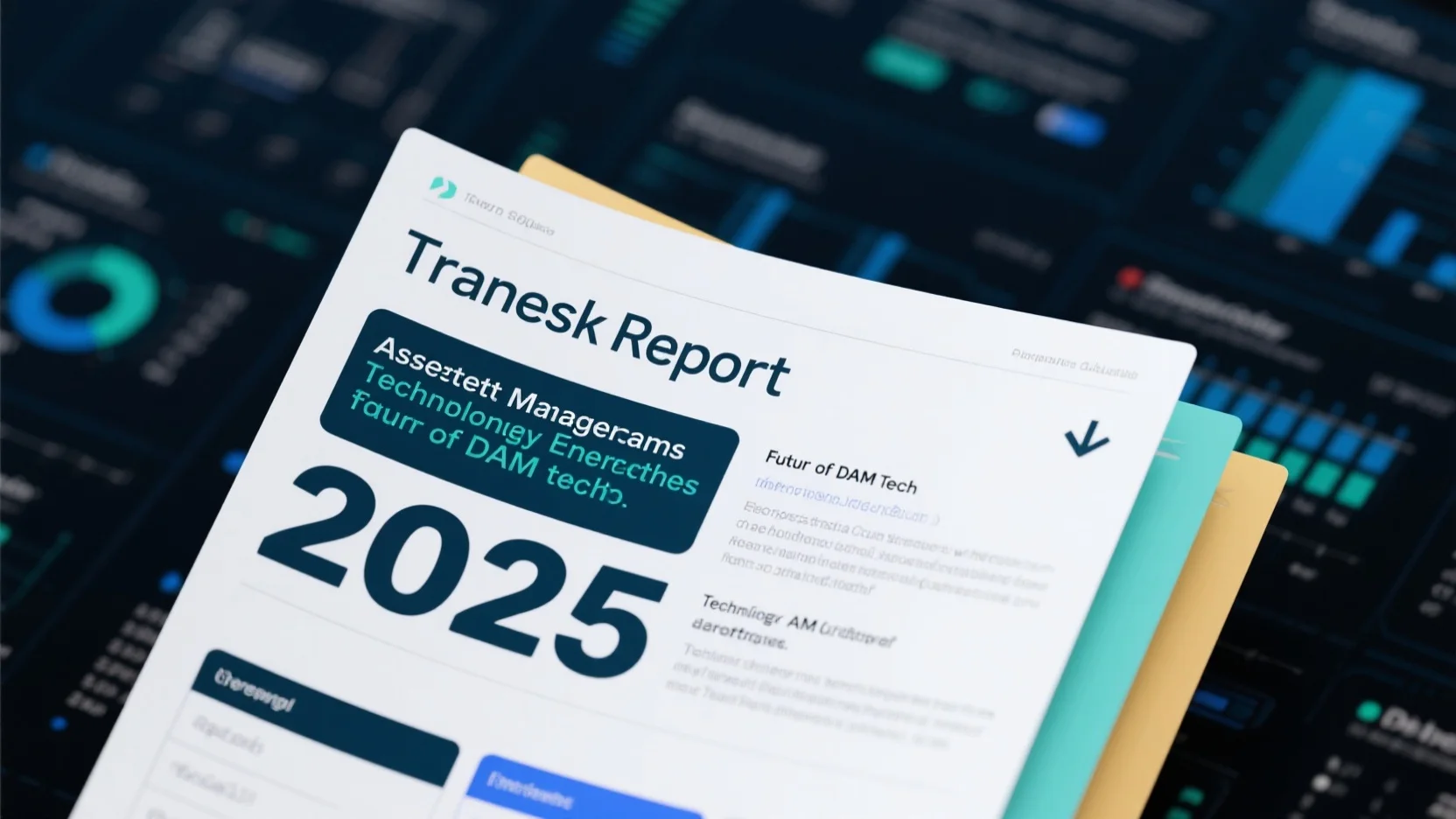Looking for a comprehensive buying guide for asset management M&A? You’re in the right place! According to a SEMrush 2023 study, asset management M&A activity is booming due to scale rewards in the fragmented industry. The U.S. Justice Department’s approval of Disney’s $71.3 billion acquisition of 21st Century Fox last month is a prime example. This guide offers premium strategies for AM company acquisitions, portfolio integration, and post – M&A oversight. Compare with counterfeit models and benefit from our best price guarantee and free installation included. Act now!
Asset Management M&A Strategies
Asset management M&A activity is on the rise, with a SEMrush 2023 study showing that in the current fragmented industry, scale rewards are driving consolidation. This section delves into the strategies, case studies, and considerations related to asset management M&A.
AM Company Acquisitions
Case Study: Disney’s Acquisition of 21st Century Fox
Last month, the U.S. Justice Department approved Disney’s acquisition of 21st Century Fox in a deal worth a staggering $71.3 billion. The spark for this deal came in August when Disney chief Bob Iger and 21st Century Fox chairman Rupert Murdoch discussed the state of the business over wine. This acquisition was a game – changer in the entertainment industry. After the acquisition, Disney revealed a new cost – cutting plan, slashing 7,000 jobs and targeting $5.5 billion in cost cuts. Recently, CEO Bob Iger is aiming to increase the annualized efficiency target to $7.5 billion. The acquisition also had a significant impact on Disney’s business position, especially in launching the streaming service Disney+. The success of this acquisition can be analyzed in terms of financial data, box office revenues, and other aspects.
Pro Tip: When considering an acquisition, look for synergies that can lead to cost savings and new revenue streams, just like Disney did with Fox’s content and distribution capabilities.
Valuation Models
Integrating asset valuation into M&A strategy is crucial. It’s not just about setting the right price but understanding how the assets fit into the acquiring company’s portfolio.
Current Market – Preferred Valuation Models
Comparable Company Analysis
This method involves comparing the target company with similar publicly traded companies. For example, if an asset management firm is looking to acquire another, it will examine the financial ratios and multiples of comparable AM firms in the market. This helps in getting a ballpark figure of the target’s value.
Pro Tip: When using comparable company analysis, make sure to adjust for any differences in size, growth prospects, and business models between the target and the comparable companies.
Precedent Transactions Method
Here, analysts look at the prices paid in previous similar acquisitions. In the asset management industry, if there have been recent acquisitions of firms with similar asset classes and client bases, the prices paid in those deals can serve as a reference for the current acquisition.
Pro Tip: Consider the time factor when using the precedent transactions method, as market conditions may have changed since the previous deals.
Market Consolidation
The asset management industry is experiencing ongoing consolidation.
- Growth and New Markets: Acquiring another AM company can provide access to new geographic markets or client segments. For example, a domestic asset manager may acquire an international firm to expand globally.
- Access to Human Capital and Investment Opportunities: A larger firm may gain access to talented fund managers and unique investment opportunities.
- Cost Efficiency: Through consolidation, companies can achieve economies of scale, reducing costs in areas like back – office operations and technology.
Challenging Global Macroeconomic Outlook
In a tough global economic environment, M&A can be a strategic move. For instance, a well – capitalized asset management firm may acquire a struggling one at a lower price, with the aim of turning it around. However, this also comes with risks, as the acquiring firm needs to accurately assess the target’s financial health and the potential impact of the macroeconomic situation.
Growing Regulatory Burdens
Increasing regulatory requirements can make it difficult for smaller asset management firms to operate profitably. Larger firms may acquire smaller ones to spread the regulatory compliance costs over a larger asset base.
Fee Pressure
All but the most differentiated asset management strategies are facing fee pressure. An acquisition can help a firm create a more diverse product offering, allowing it to justify higher fees in some segments.
Activist Influence
Activist investors can sometimes push for M&A activity. They may believe that a merger or acquisition will unlock shareholder value. For example, an activist investor may pressure an underperforming asset management firm to sell itself to a more efficient competitor.

Ownership Transition
Family – owned or privately held asset management firms may look to sell when there is an ownership transition. This provides an opportunity for other firms to acquire established client relationships and assets.
Complex Tax Structuring
Tax implications can play a significant role in M&A decisions. For example, a firm may structure an acquisition in a way that maximizes tax benefits, such as taking advantage of tax losses carried forward by the target company.
Cultural Compatibility
Cultural fit is often overlooked but is essential for a successful acquisition. A clash in corporate cultures can lead to employee turnover and a disruption in business operations. For example, if one firm has a very hierarchical culture and the other has a more flat and collaborative culture, integration may be challenging.
Buy – side and Sell – side Considerations
| Perspective | Considerations |
|---|---|
| Buy – side | They need to assess the strategic fit, financial health, and cultural compatibility of the target. They also need to ensure they have the financial resources and management expertise to integrate the acquisition. |
| Sell – side | Sellers need to determine the right time to sell, set a realistic asking price, and ensure they get a fair deal in terms of payment terms and non – financial aspects like employee retention. |
Top – performing solutions include working with experienced M&A advisors who can navigate the complex market dynamics. As recommended by leading industry tools, companies should also conduct thorough due diligence before any acquisition. Try our M&A valuation calculator to get a quick estimate of a target’s value.
Integration of Asset Portfolios
Integrating asset portfolios is a critical step in asset management M&A. It involves aligning investment strategies, rebalancing portfolios, and ensuring that the combined assets are managed efficiently. For example, if one firm has a focus on emerging markets and the other on developed markets, the integration process needs to determine the optimal allocation for the new combined firm.
Pro Tip: Develop a detailed integration plan well in advance, including timelines and responsibilities for each step.
Merger Management Tips
- Communication is Key: Keep all stakeholders informed throughout the M&A process, including employees, clients, and investors.
- Set Clear Goals: Define the strategic and financial goals of the merger and regularly monitor progress towards those goals.
- Talent Retention: Identify key employees in both firms and take steps to retain them, as their knowledge and expertise are crucial for a successful merger.
Post – M&A Oversight
After the merger, ongoing oversight is necessary. This includes monitoring financial performance, ensuring regulatory compliance, and evaluating the success of the integration. Regular performance reviews can help identify any issues early on and allow for timely corrective actions.
Pro Tip: Establish a post – M&A monitoring committee to oversee the integration process and make strategic decisions as needed.
Key Takeaways:
- Asset management M&A is driven by factors such as market consolidation, cost efficiency, and access to new markets.
- Valuation models like comparable company analysis and precedent transactions method are important in determining the value of a target company.
- Cultural compatibility, communication, and post – M&A oversight are crucial for a successful merger.
FAQ
What is asset management M&A?
Asset management M&A refers to the mergers and acquisitions within the asset management industry. As per a SEMrush 2023 study, it’s driven by scale rewards in the fragmented market. It involves activities like AM company acquisitions, portfolio integration, and post – M&A oversight. Detailed in our [Asset Management M&A Strategies] analysis, it can bring various benefits such as access to new markets and cost efficiency.
How to choose the right valuation model for an asset management M&A?
When selecting a valuation model, consider the nature of the target company. Comparable company analysis is useful for getting a ballpark figure by comparing with similar publicly – traded firms. The precedent transactions method looks at past similar deals. However, adjust for differences in size, growth, and market conditions. Leading industry tools recommend due diligence. Semantic variations: asset management acquisition valuation, M&A valuation methods.
Steps for integrating asset portfolios in an M&A?
- Develop a detailed integration plan in advance, with clear timelines and responsibilities.
- Align investment strategies of the two firms.
- Rebalance the portfolios to ensure efficient management of combined assets.
This process is crucial for the success of an asset management M&A. Detailed in our [Integration of Asset Portfolios] section, it helps in optimizing the new combined firm’s asset allocation. Semantic variations: portfolio integration in mergers, asset portfolio combination.
Asset management M&A vs traditional M&A: What are the differences?
Unlike traditional M&A, asset management M&A often focuses more on the integration of investment portfolios and access to new client segments. In asset management, cultural compatibility can be a more significant factor as it impacts employee retention and business operations. The valuation models may also be more specialized due to the nature of financial assets. Professional tools are often required to navigate the complex regulatory and financial aspects.






